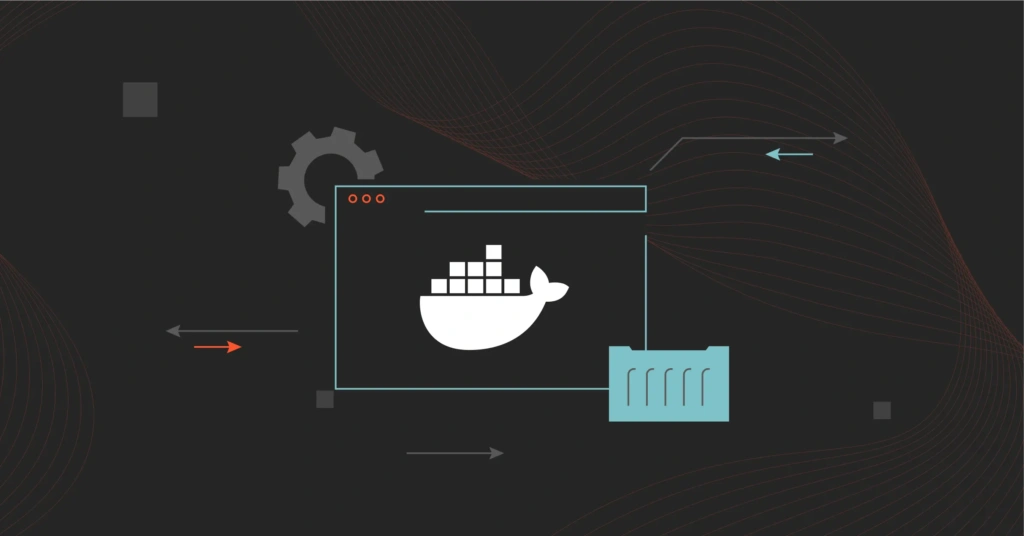Although container-related technology existed before 2013, Docker revolutionized and propelled it into the mainstream. Using Docker, developers could automatically create containers from application source code, share libraries, and reuse containers.
Docker enables you to track container image versions, roll back to an earlier iteration, and track who built a specific one. You can even upload only the deltas between two versions.
Ultimately, Docker containers do not need modification to run across any desktop, cloud environment, and data center. They just work.
But on Dec. 2, 2020, Kubernetes contributors announced that they would deprecate Docker runtime starting with version 1.20. In Docker’s place, Kubernetes would use the Container Runtime Interface (CRI), which supports a wider range of runtimes compared to Docker.
But what exactly is Docker and what Docker Alternatives do you have available to you today?
What Is Docker?
Docker is an open platform for container development, deployment, and management. It enables developers to separate their applications from the underlying infrastructure. This reduces the time between coding and deploying to production, making the development process more effective.
The Docker platform offers tools for handling container lifecycles. With Docker, applications and their components can be developed inside containers. Containers are used as the primary means of distributing and testing software. When ready, you can deploy these containers into production environments.
Docker is also beneficial for CI/CD processes. Developers can write code locally and distribute their projects through Docker containers. These containers undergo automated and manual testing in test environments. If any errors are detected, they can be fixed in the development stage and then rolled out again for more testing.
Is Docker Still Relevant In 2024?
Docker remains relevant to most container projects, applications, and developers today thanks to its modern tools, compatibility, large community, and ease of use. However, Docker Inc. has undergone changes recently, including changes to Docker Desktop licensing.
There are likely to be more changes ahead, so if you’re concerned about Docker’s future and the rise of Kubernetes, consider Docker alternatives.
Can You Use Containers Without Docker?
Using containers without Docker is possible. At times, it’s even more favorable, depending on your project’s needs and limitations. While Docker is one of the most popular container management and deployment platforms, it is not the only option. Other alternatives offer the features and integrations that ensure containerization retains its flexibility and usefulness.
What Are The Best Docker Alternatives In 2024?
Docker has several standalone alternatives, some of which offer virtualization technologies and cross-platform support. There are also Open Container Initiative (OCI) tools that work with Docker, replace some Docker components, or work with other Docker alternatives to form robust Docker competitors.
Note: You won’t find Kubernetes here. Despite popular comparisons, Kubernetes is not a direct alternative to Docker — that would be Docker Swarm, the container orchestration tool by Docker.
1. Buildah – Command-line tool for OCI images and containers
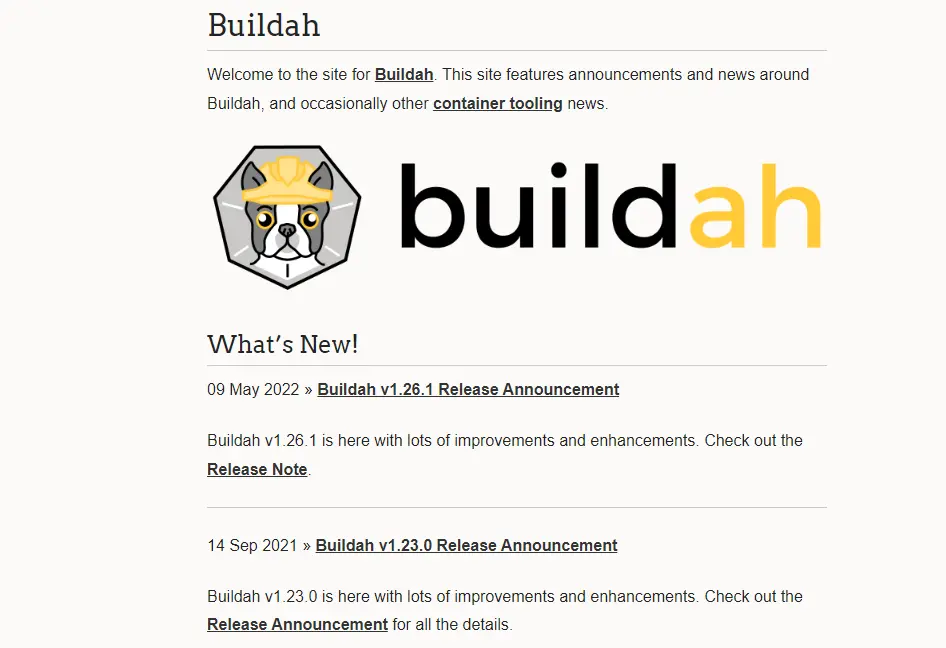
If you want to build OCI container images without installing a standalone container runtime or daemon, Buildah may be your best choice. Creating OCI images is Buildah’s primary focus. Its commands replicate the commands in a Dockerfile. The result is that you can create images with or without Dockerfiles without needing root privileges. The images will still work with both Docker and Kubernetes.
Buildah aims to deliver a lower-level coreutils interface for building images. By not requiring Dockerfiles, you can also integrate different scripting languages into your build process. It also uses a lightweight fork-exec model rather than running as a daemon. It is also implementable with other tools, like Podman, Skopeo, and Dive.
2. LXD – Linux daemon by Ubuntu
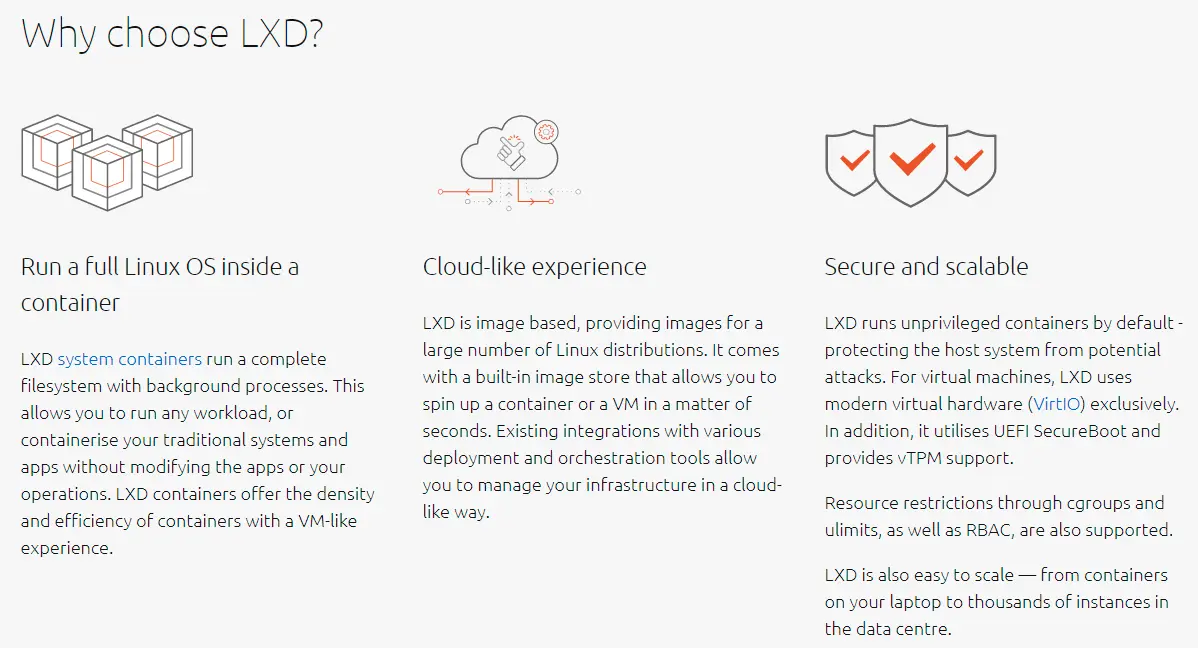
Linux Daemon (LXD) manages virtual machines and system containers on Linux systems. It is image-based, fast, secure, and highly scalable. You can set it up in a cluster management environment to manage even more complex workloads through VMs, containers, or both within a set of machines.
LXD can be described as a REST API that connects to the Linux Containers (LXC) library, libxlc. However, it has several powerful advantages over LXC. These include direct hardware access, which reduces operational costs while increasing efficiency and density. It also offers advanced snapshot features such as automatic expiry and scheduling.
3. Vagrant – CL utility for VMs lifecycle management
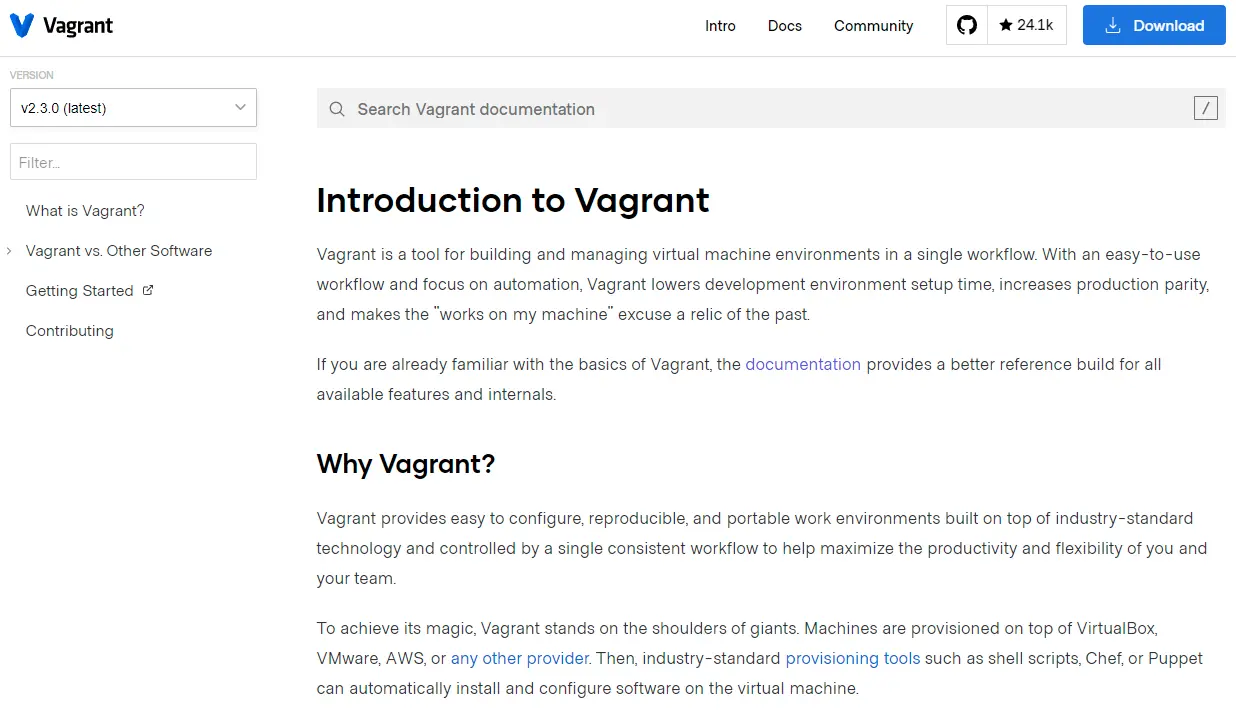
With HashiCorp’s Vagrant, you can replicate multiple conditioned virtual environments across a variety of operating systems and virtual machines. It helps set up a virtual environment that you can replicate multiple times on different networks,VMs, and OSs. This facilitates interoperability. You can also create matching virtual environments to stage, develop, and deploy apps.
Vagrant also enables you to create and share VM images on different platforms, helping you set up virtual environments that share libraries and compilers. Conversely, Docker frequently reverts to the old image after restarting. Moreover, unlike Docker, which has user-level isolation, Vagrant lets you use different tools and capabilities together.
Vagrant works with most virtualization software, including VMware and VirtualBox.
4. Containerd – A simple yet robust container runtime
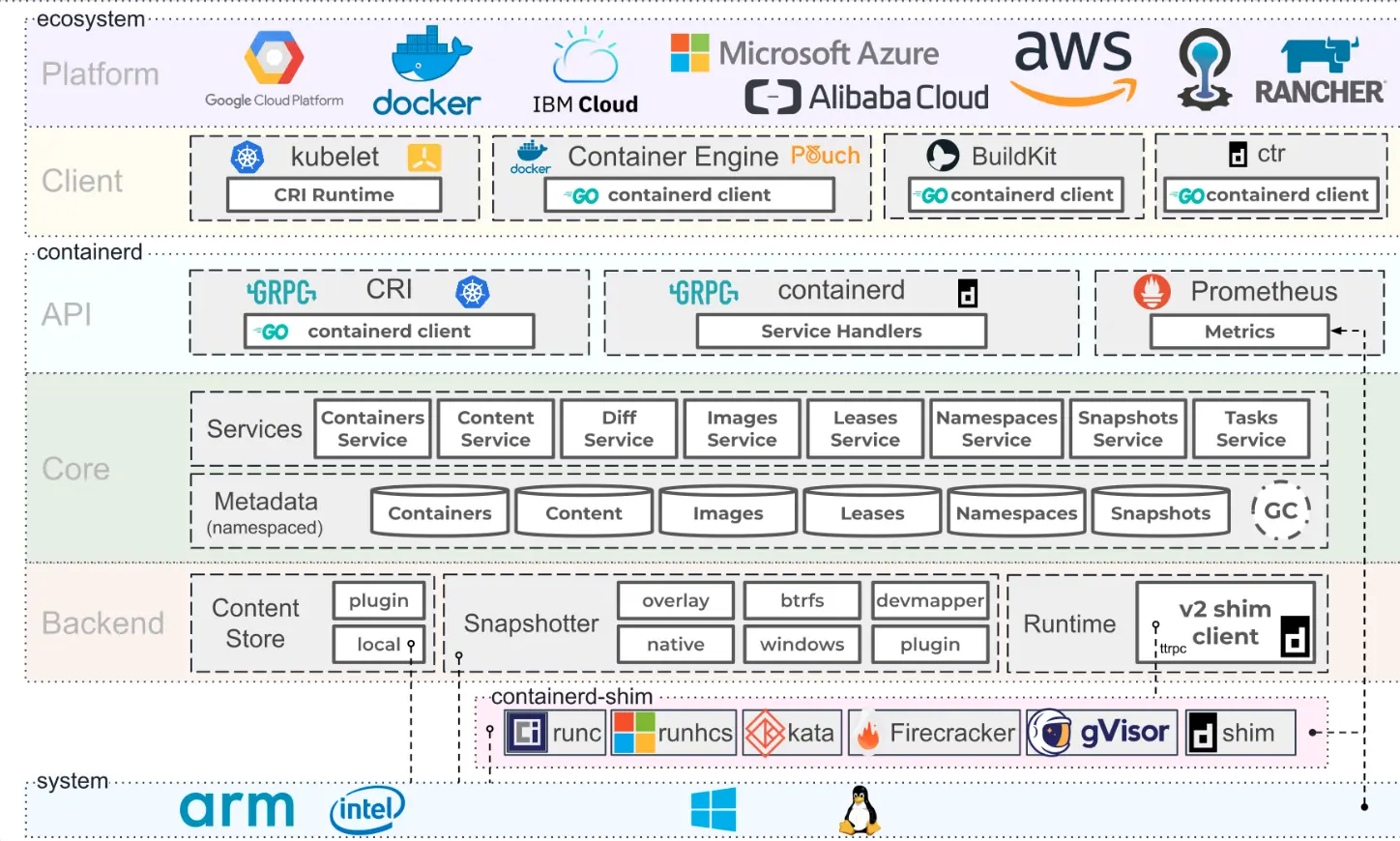
Containerd is a CNCF-graduated container runtime project that has been Docker’s preferred container runtime for years. Docker currently uses runC. Containerd handles all aspects of container lifecycle management for its host system. It creates, runs, and destroys containers as needed. It also handles image transfers and storage, container supervision, as well as low-level storage and network attachments.
Containerd is also suitable for multi-tenant operations when combined with CAS storage (for global images). Another advantage is that it integrates with numerous tools and services, including runC, Kubernetes Engine, Amazon Kubernetes Service (AKS), and Azure Kubernetes Service (AKS). Containerd is also available as a daemon for Windows.
5. ZeroVM – Open-source virtualization with sandbox support
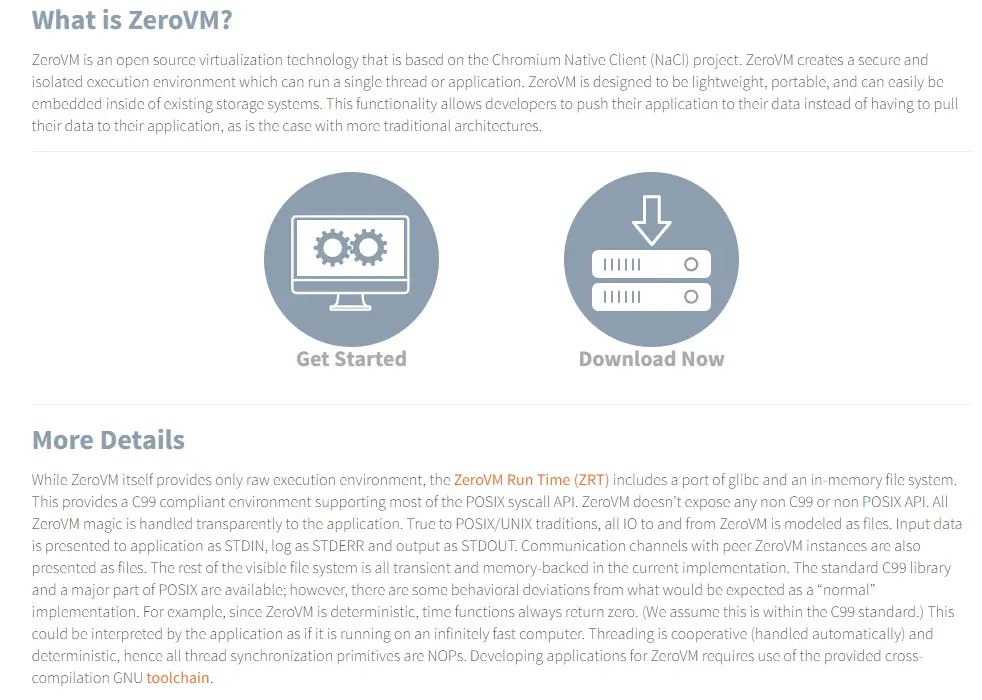
ZeroVM is a portable, lightweight, and secure tool for creating an isolated environment for running single processes at a time. This approach is based on the Chromium Native Client (NaCl) project. In contrast, other virtualization and container technologies provide a fully virtualized OS and running environment for executing multiple processes.
Instead, ZeroVM embeds an application in an isolated environment in order to enable virtualization at the app level — that, without requiring an operating system or kernel. This setup boosts deployment speed (startup in under 6 milliseconds) and improves security for processes or apps that run unverified code across different virtual environments.
6. Podman – Open-source, daemonless container engine for Linux
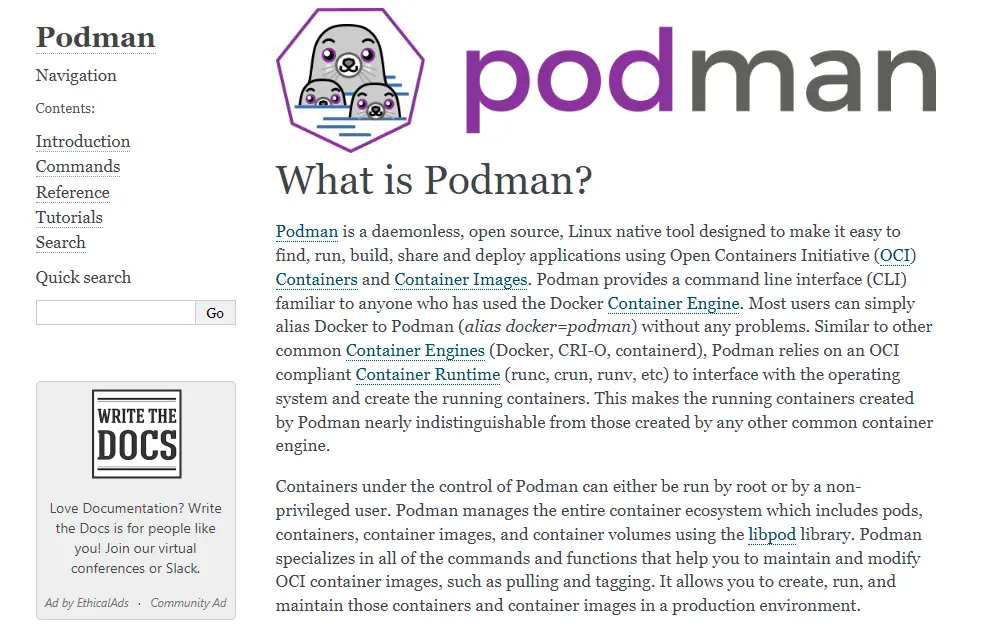
Podman is a Linux-native container engine that leverages the libpod library for container lifecycle management tools. The program excels at executing the commands and tasks that update and tweak OCI images, including pulling and tagging. It also helps create, run, and maintain the containers you create from those images. While it runs containers on Linux, you can still use Podman to run them on Windows and Mac systems with a Podman-managed virtual machine.
Note that Buildah and Podman have different concepts of a container. While Podman lets you create more long-lived containers, Buildah containers simply enable you to add content back to a container image. Think of this way: the buildah run command imitates the RUN command in a Dockerfile, while the podman run command mimics the docker run command. This and their underlying storage system differences prevent you from seeing Buildah containers within Podman, and vice versa.
7. BuildKit – Image building engine for Docker
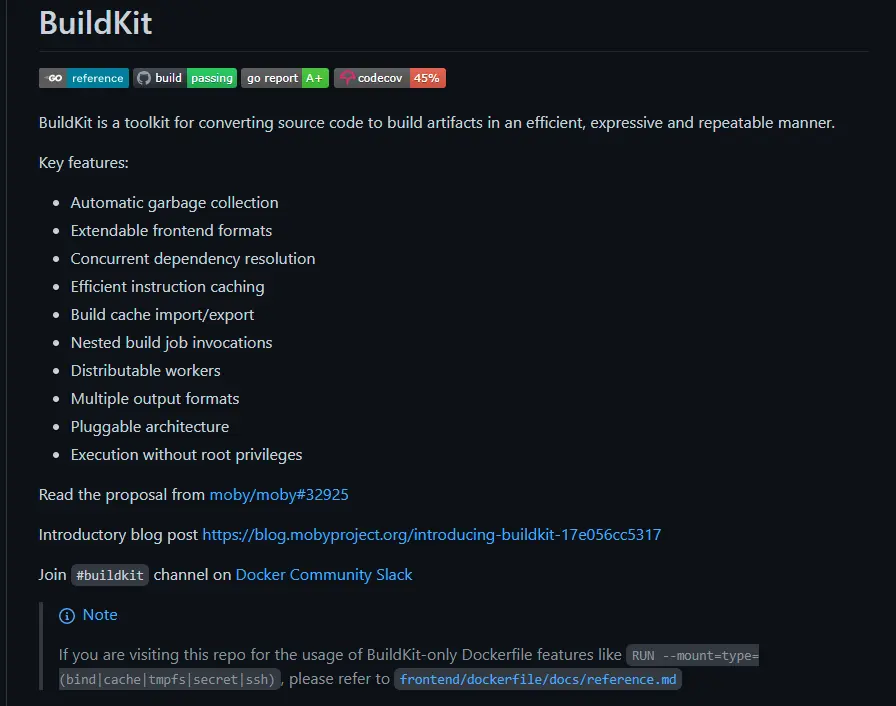
BuildKit is an image-building engine from the Moby Project. It is available as part of Docker Build (Docker version 18.09 and later) and as a standalone tool under Moby.
Like Docker, BuildKit runs on a daemon. However, while Docker builds each image layer at a time, BuildKit leverages parallel build processing to improve performance in faster builds.
Its enhanced caching also ensures that you do not have to continually rebuild each layer. BuildKit also supports skipping unused stages, rootless builds, and facilitates incremental builds. In addition, it offers improved plugging architecture to improve extensibility. This is how some developers are able to use BuildKit to convert functions into containers or to complete CI pipelines.
8. RunC – OCI compliant container runtime tool
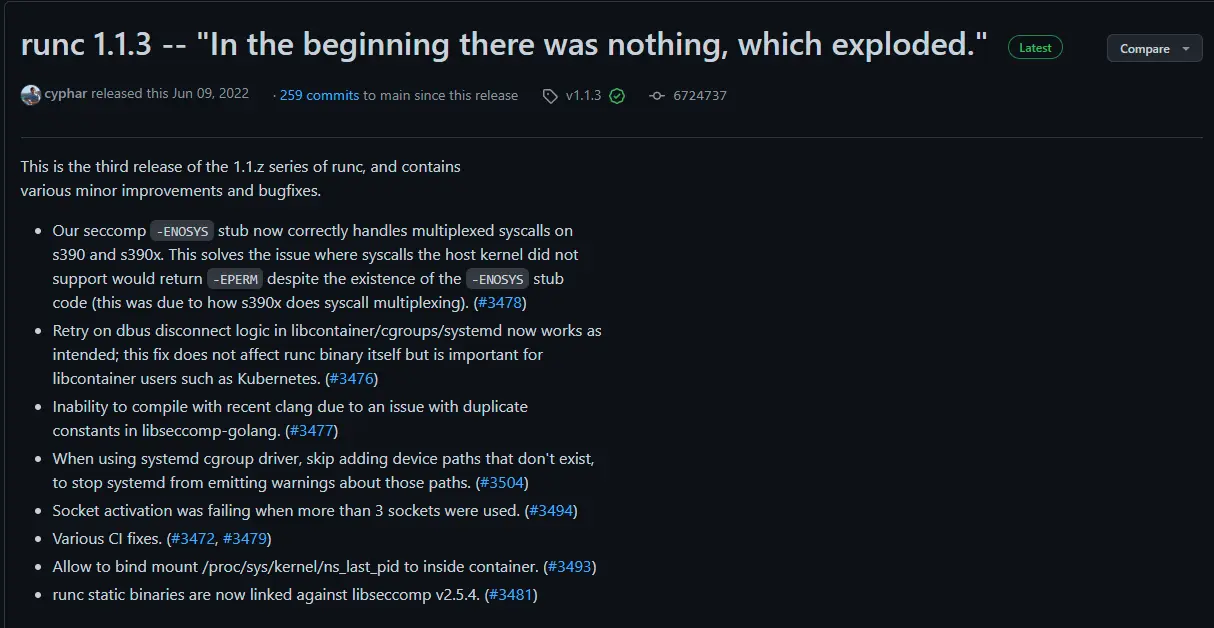
RunC is a GitHub-hosted, Command-Line Tool built with Go (v1.17 or later) for spawning and running containers on Linux systems. It does this based on OCI specifications. RunC used to be a low-level tool, meaning using it directly as an end user wasn’t advisable. A standalone version is available now, meaning you can use runC as part of Docker or separately.
It is independent of Docker and serves as a lightweight, universal, and portable container runtime — similar to Containerd but without Windows support.
9. Rkt – Pod-native, app container engine
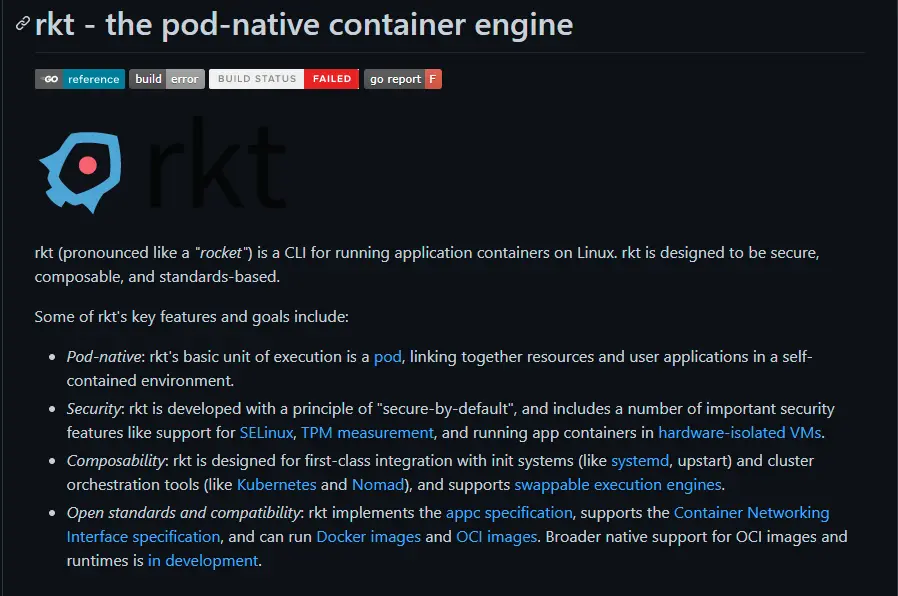
Formerly CoreOS Rocket, rkt is an application container engine suitable for cloud-native production environments. With its pod-native framework and pluggable execution environment, rkt integrates seamlessly with other systems, making it a top Docker alternative.
Rkt lets you apply various configurations (such as isolation parameters) both at the pod-level and per-application level. This architecture means no central daemon exists; pods run directly as Unix processes, each in its own isolated, self-contained environment. Also, while rkt uses the App Container (appc) format, it also handles other container images, including Docker images.
However, rkt is no longer under active development in GitHub. But you can still use, fork, and develop its codebase under a different name. It’s a good idea to mirror all the necessary bits, as you never know if they’ll always be available.
10. Microsoft Azure Container Registry – Managed OCI distribution
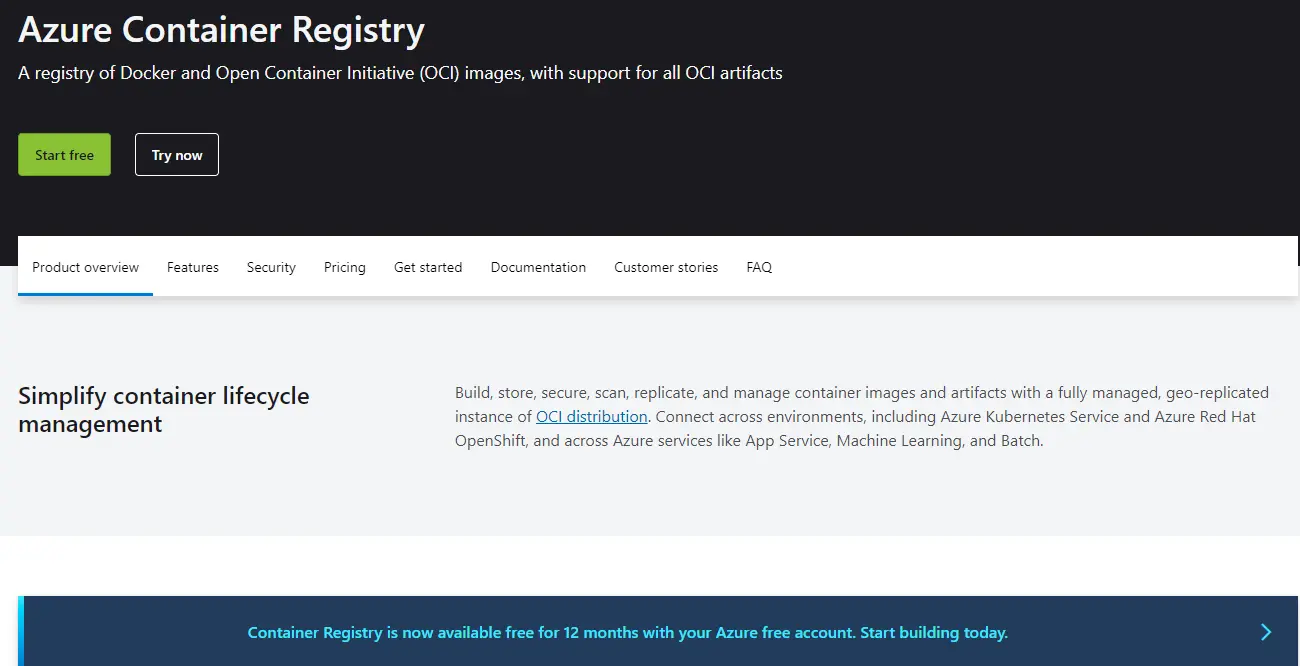
With Microsoft Azure Container Registry, you gain access to a private Docker registry that helps you store and manage container images using Docker Command-Line Tools. In addition to offering robust security features, it offers Twist Lock compatibility, runtime protection, and scanning for container vulnerabilities.
Microsoft Azure is also the second most popular cloud computing platform behind Amazon Web Services (AWS), so it makes sense to run container projects here. You can also deploy, run, and scale apps easily with container orchestrators like Docker Swarm and Kubernetes.
As with Docker Hub, Azure Container Registry acts as a catalog of container images, letting users manage container contents directly. It also offers integrated authentication and facilitates geo-replication, including tag locking and setting up a private virtual network.
11. Kaniko – Open-source container image building tool for Kubernetes
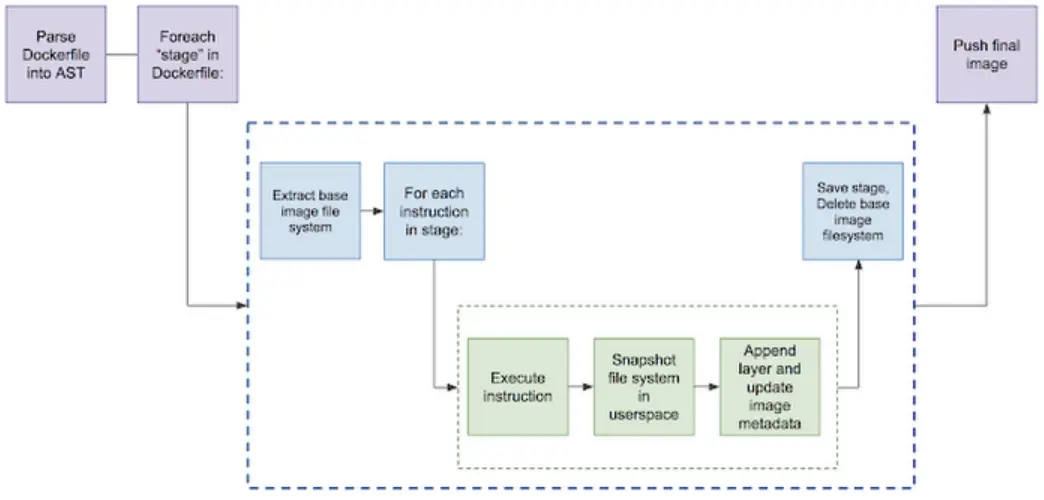
With Kaniko, you can build container images from Dockerfile within a Kubernetes cluster or container. Because Kaniko doesn’t rely on a Docker daemon, it runs each command inside a Dockerfile entirely in userspace. This helps you build container images in environments that are unable to expose a Docker daemon securely or easily (read: standard Kubernetes clusters).
You can also use Kaniko with Google Container Builder without needing to execute in privileged mode (root access). This ensures security and improves performance. Further, this approach allows Kaniko to run on any standard K8s cluster, Google Kubernetes Service (GKS), and others where a Docker Daemon is unavailable or does not have root access.
12. Red Hat OpenShift – Kubernetes-based container platform

Red Hat OpenShift is a Kubernetes platform that integrates with DevOps tools to improve functionality. It boasts robust features such as automated updates, built-in CI/CD tools, and top-notch security protocols.
OpenShift offers a built-in image registry for storing and sharing Docker images. This allows users to deploy applications from their source code repository while following DevOps best practices.
OpenShift also integrates with the rest of Red Hat’s ecosystem. This ensures smooth deployment, management, and scaling of applications in hybrid or multi-cloud environments.
13. Rancher Desktop by SUSE – Kubernetes management tool for desktops
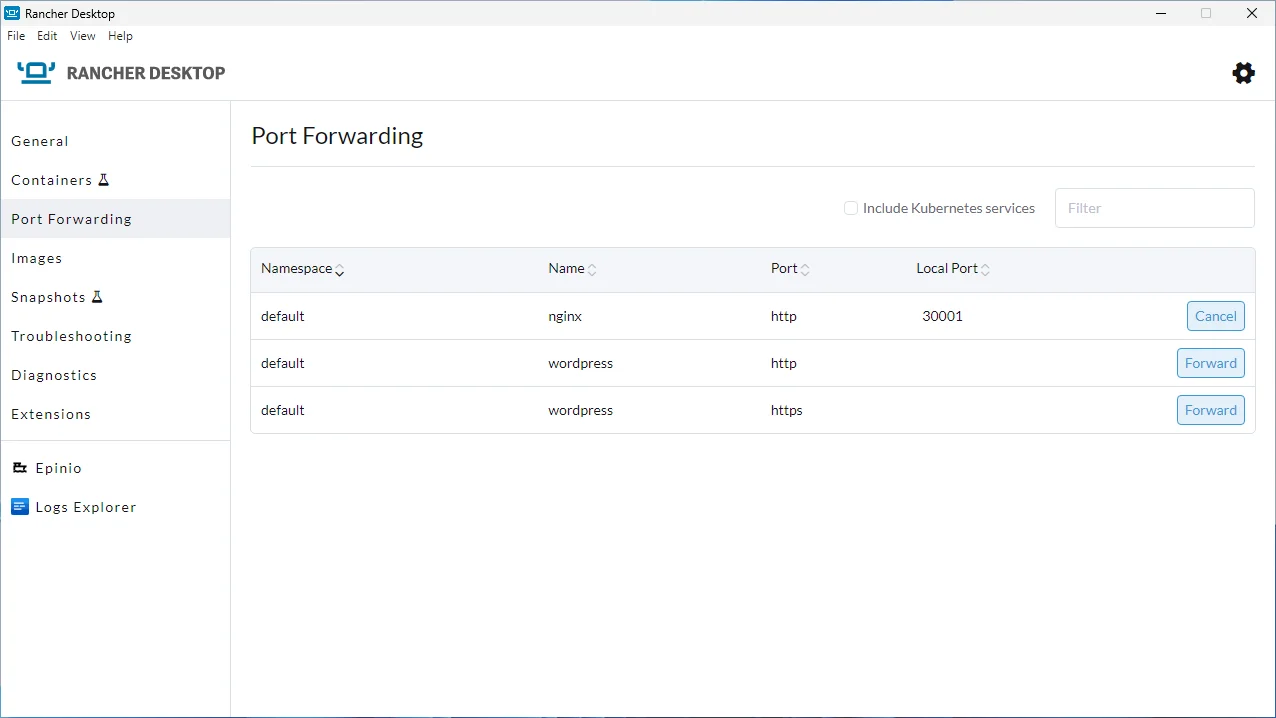
Rancher Desktop is a platform for managing containers that makes it easier to deploy Kubernetes on desktops. It offers an easy-to-use interface and robust features for handling Kubernetes clusters and containerized applications.
Rancher Desktop provides a visual interface for developers to build, operate, and oversee containers. It provides flexibility in managing containers by supporting both Docker and Containerd runtimes. The platform is ideal for developers who want a simple, Docker-like experience.
14. Apache Mesos – Cluster resource manager
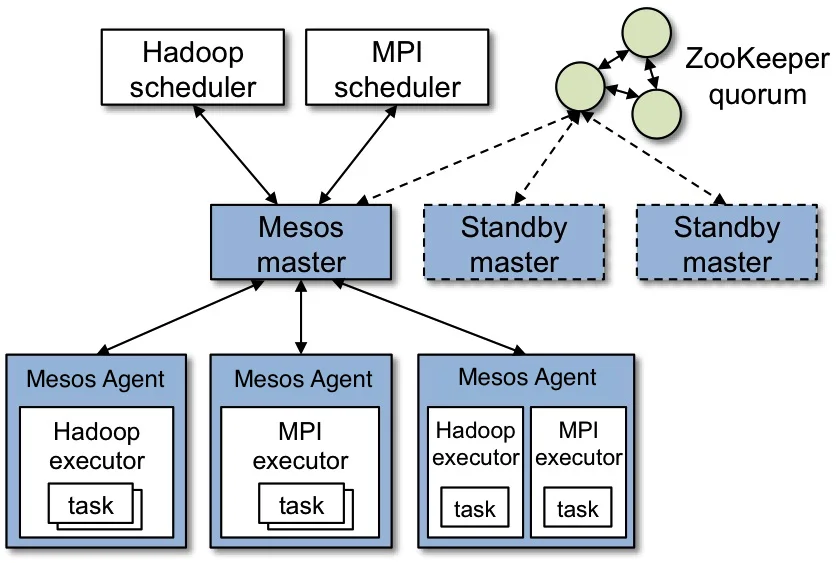
Apache Mesos is a cluster manager that enables effective resource isolation and sharing across distributed applications or frameworks. Its ability to run containerized and non-containerized tasks makes it a flexible option for Docker.
Mesos separates CPU, memory, storage, and other computing resources from individual machines. This allows for fault-tolerant and flexible distributed systems. Its high scalability and capacity to handle extensive clusters makes it ideal for demanding, high-performance applications.
15. VirtualBox – Virtualization platform for VMs
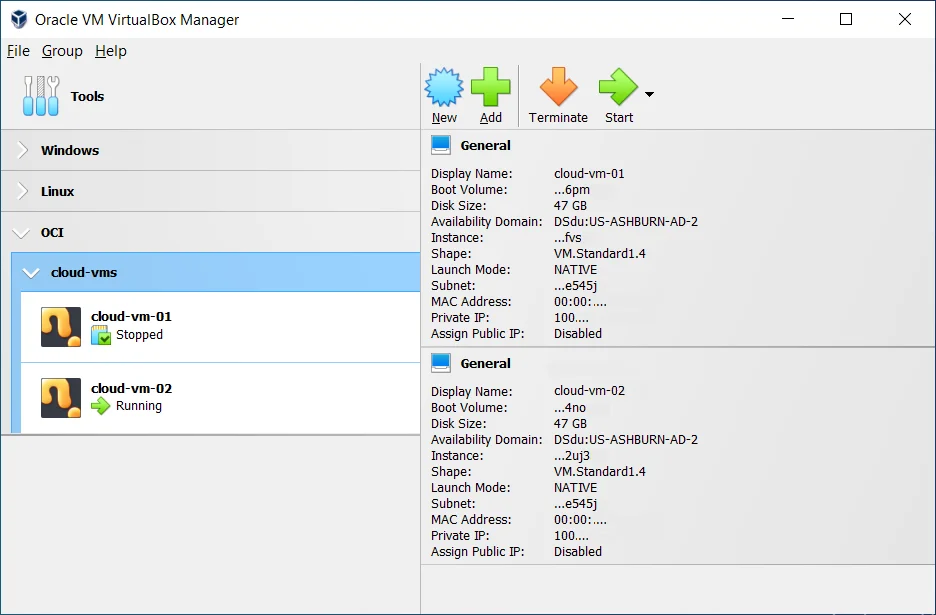
VirtualBox is a virtualization product for x86 and AMD64/Intel64, suitable for home and enterprise purposes. Although not designed specifically for containerization, it provides robust capabilities for running virtual machines.
VirtualBox enables users to establish isolated environments for testing and development without causing any disruption to the host system. It is compatible with different operating systems and offers excellent flexibility and ease of use.
VirtualBox provides a dependable option for developers requiring a virtualized environment to operate Docker or other container platforms.
What Next: View, Understand, And Control Your Cost Of Containerized And Non-Containerized Apps With CloudZero
You can now choose from a variety of Docker alternatives based on your workload requirements. Yet, whatever tool you add to your stack, using containers shouldn’t come with cost surprises — something that happens all too often.
CloudZero’s cloud cost intelligence platform makes it easy to collect, analyze, and understand costs across containerized and non-containerized infrastructure. You can view your costs by product, feature, customer, and more, right down to the hour and pod level, regardless of whether you are running entirely on containers or just transitioning.
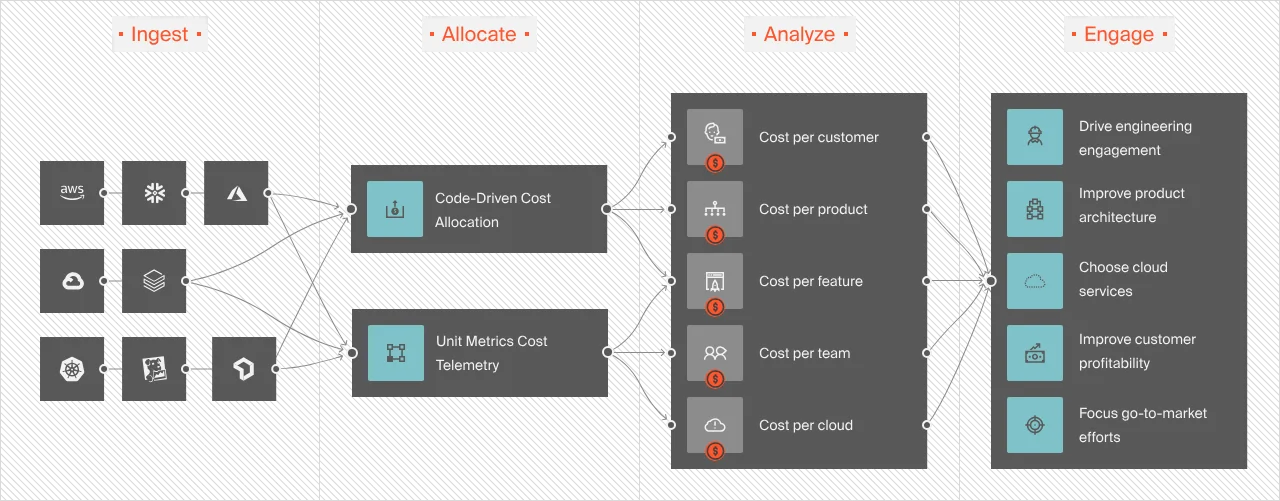
By combining all your cloud spend into one platform, CloudZero ensures you never miss anything.
The result? We empower you with cost intelligence like, how much it costs to run a microservice, support a specific customer, deploy and maintain a given software feature, and more.
Whether your workloads rely on containerized or traditional infrastructure or a combination of both, CloudZero can help.

